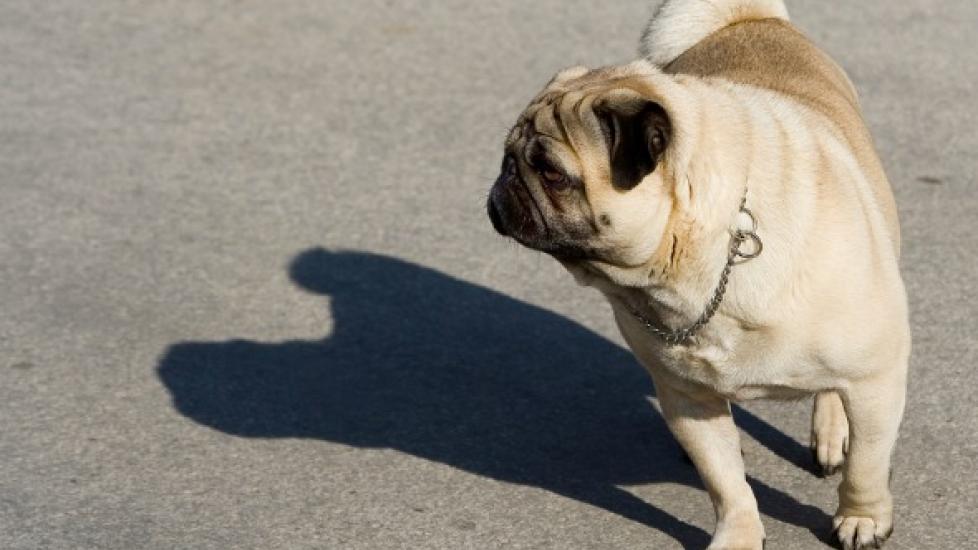Front Leg Deformity in Dogs
Antebrachial Growth Deformities in Dogs
On occasion, a dog's front leg continues to grow well after the other has stopped, resulting in one normal-sized leg and another irregularly-sized leg. This is commonly referred to as an antebrachial growth deformity. When this occurs the shorter leg's bone may twist and bow, or it overgrows at the elbow. In either case, the result is misalignment of the bones. The tendency of a joint to stop growing seems to be a recessive trait in Skye Terriers. There is also the possibility of elbow joint misalignment in basset hounds and Lhasa Apsos.
Another front leg deformity which commonly occurs is called elbow dysplasia. It occurs when the point of the elbow and the muscular structure do not develop normally, and is most commonly seen in large and giant-breed dogs, especially Bernese Mountain Dogs, Golden Retrievers, Labrador Retrievers, and Rottweilers. Males are also more susceptible to the condition. This deformity becomes apparent at the fifth to the eighth month and is usually in both elbows.
Longer-limbed dogs are more likely to suffer deformities of the longer bones, whereas shorter-limbed dogs tend to develop more joint problems. The age of the animal when the deformity occurs will also affect the severity of the condition.
Symptoms and Types
- Bowed and twisted front leg
- One leg is longer than the other
- Lameness (which is especially apparent after exercise)
Vet Recommended Health Support
- Purina Pro Plan Veterinary Diets FortiFlora Powder Probiotic Digestive Supplement for Dogs, 30 count$30.99Chewy Price
- VetClassics Pet-A-Lyte Oral Electrolyte Solution Dog & Cat Supplement, 32-oz bottle$18.53Chewy Price
- Nutramax Welactin Omega-3 Liquid Skin & Coat Supplement for Dogs, 16-fl oz$27.99Chewy Price
- Fera Pets USDA Organic Pumpkin Plus Fiber Support for Dogs & Cats, 90 servings$34.95Chewy Price
Causes
There are many potential causes for front leg deformities in dogs; some of the more common ones include:
- Trauma: This is most common cause; it may interfere with new cartilage production, resulting in a stoppage of bone elongation
- Osteochondrosis: A disturbance in the change of cartilage to bone; the cause of this disease is not completely understood, however, it is thought to have genetic, nutritional, and traumatic components
- Elbow malalignment syndrome: It tends to occur in chondrodysplastic breeds (e.g., Basset Hounds, Dachshunds, and Corgis)
- Nutritional deficiency: This issue is becoming less prevalent in dogs as as nutritional standards improve
- Congenital: This is rare in dogs; a dog with this form of deformity will have severely bowed front legs and a possible ankle dislocation
Diagnosis
Your veterinarian will order X-rays of the entire limb, including the elbow, to compare the lengths of the bones, and to determine whether the muscles in the elbow are attached. Other signs the veterinarian may look for in the X-rays to confirm antebrachial growth deformities are bone enlargement, inflammation of the entire bone structure, and flexor muscle spasms.
Treatment
If your veterinarian determines that the deformity is due to a genetic predisposition, breeding of the dog will be discouraged. If the deformity is due to an injury, however, your veterinarian will probably recommend surgery to repair the damage -- removing any abnormal cartilage or bone and returning the joint to its normal function. Arthroscopic removal may have advantages over a surgical incision into the joint (arthrotomy), particularly regarding removal of fragmented coronoid process (FCP).
Living and Management
If surgery is needed, special care will be necessary for several weeks after your dog is brought home, such as controlling it's lean body weight, monitoring its pain, and the prescription of non-steroidal anti-inflammatory medications. Therefore, it may be best to confine your pet in a cage to help limit any strenuous activity.
Otherwise, adjust diet supplements (especially in larger dogs) as advised and keep the animal at its recommended weight. In addition, joint misalignment may lead to arthritic pain, so seek your veterinarian's advice to alleviate the dog's pain.




